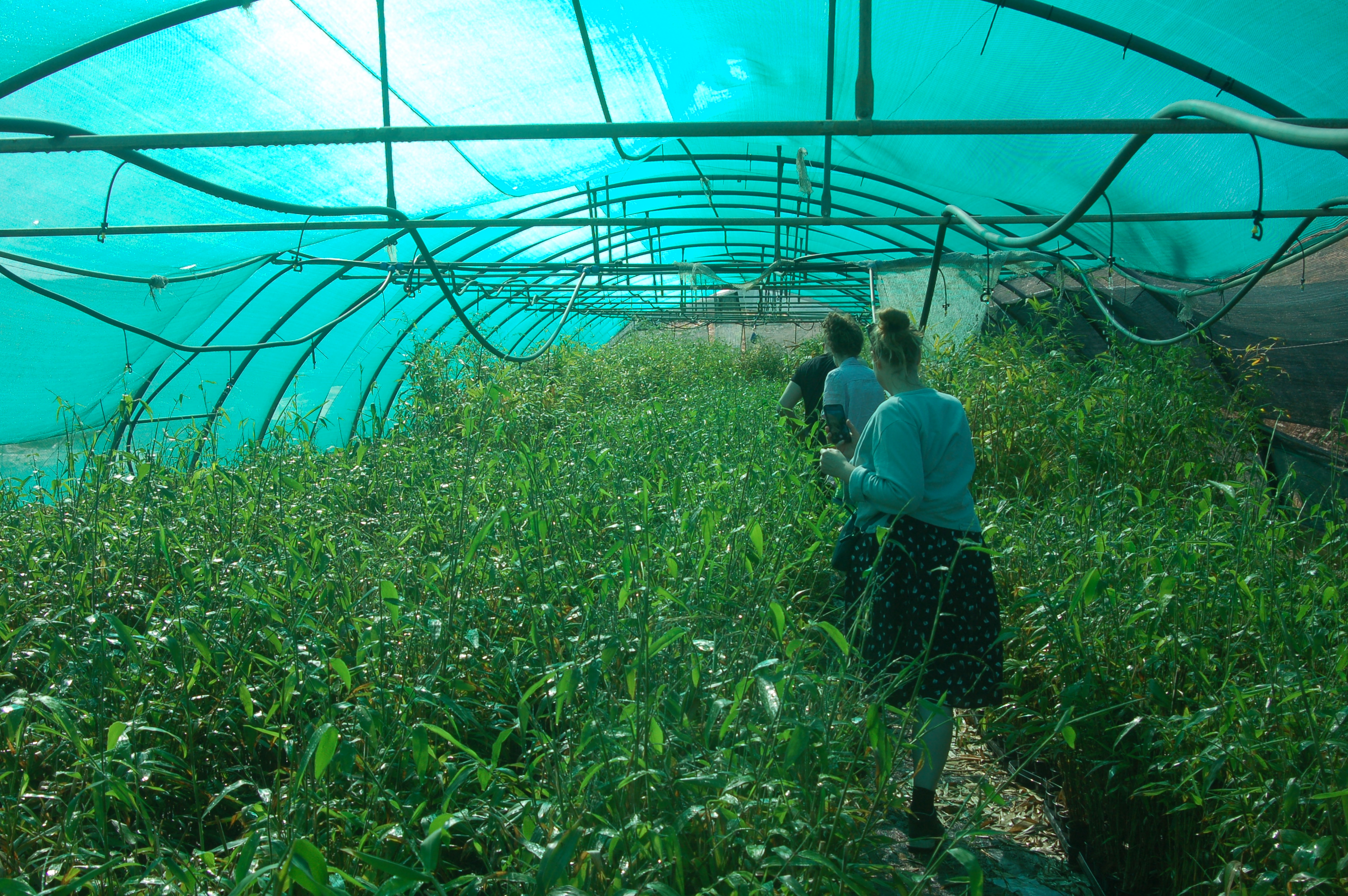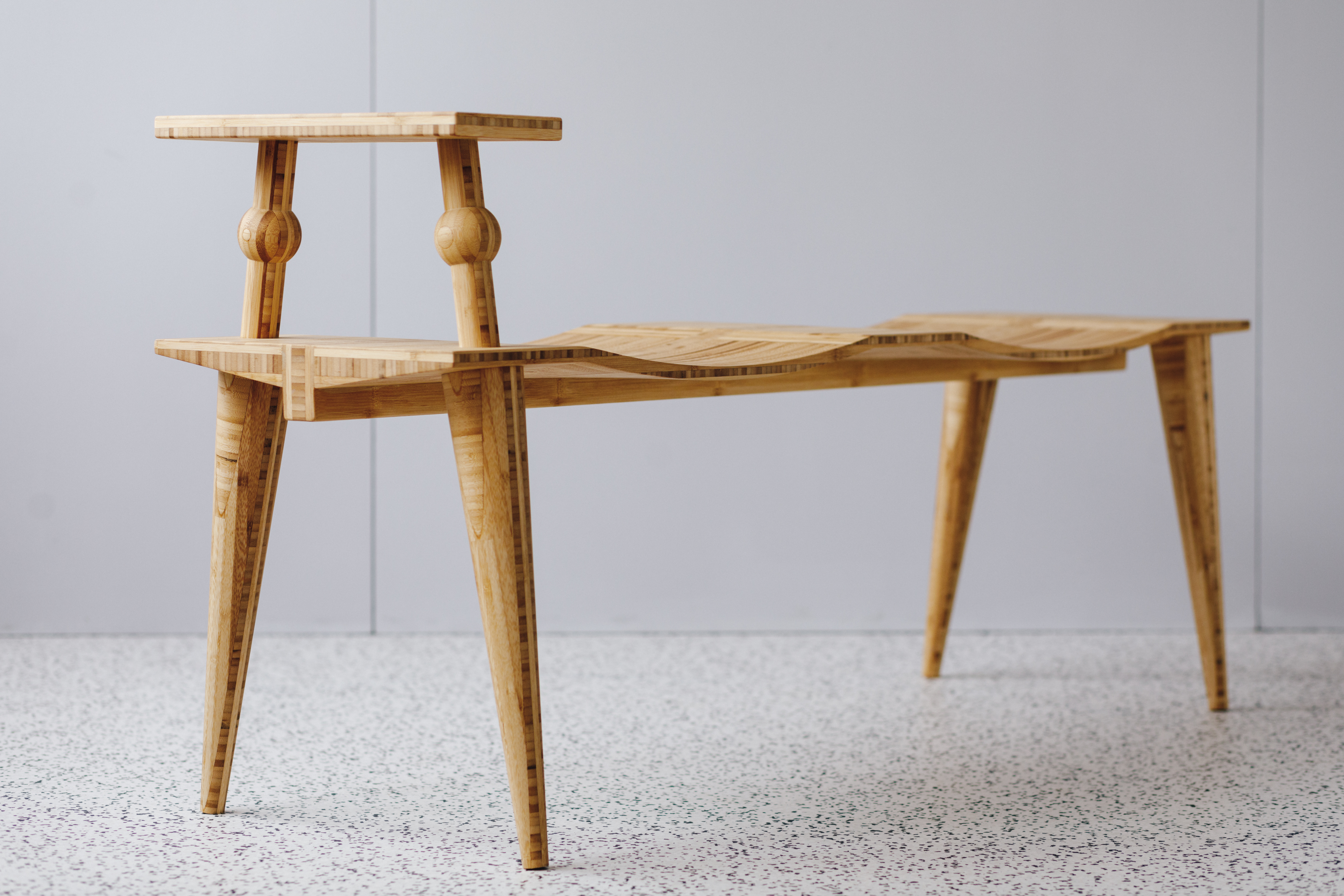Designing with Bamboo: sustainable thinking in practice
- Design
Bamboo grows fast, enriches poor soils and absorbs lots of CO2. Until now, we mainly imported this type of wood from Asia. But with the introduction of a large-scale bamboo plantation in Europe, there is now more room for research into building a sustainable bamboo value chain. That was precisely the aim of the research project Bamboo Europe in which the professorship in Tactical Design at ArtEZ explored the potential of locally produced bamboo - from raw material to finished product. Now that the project has been completed, the question arises: does bamboo have a future in Europe?

Bamboo is often considered exotic in Europe. Most people know it as a decorative material for interiors and construction, for instance. Because we import it exclusively from Asia and it is rarely part of the European production process, we have little insight into how it is made. "We don't know under what conditions the products are created in Asia and how they are manufactured," says lecturer-researcher Tjeerd Veenhoven, who was involved in the project from ArtEZ. "And because this has become increasingly important for Europe in recent years, we need to do more research to answer the question of whether producers and designers here in Europe can do something with this wood species as well.”
From stones to entire bamboo fields
For over two years, ArtEZ’s professorship in Tactical Design worked with designers, companies, knowledge institutes, teachers and students to investigate how bamboo from Europe can be used to develop sustainable value chains for various applications. BambooLogic's first commercial bamboo plantations in southern Portugal formed the basis for the Bamboo Europe project. “We actually went there," Tjeerd says. "It was very inspiring to visit places that have turned from a stone surface into entire bamboo fields." A designer himself, he found it fascinating to see how his colleagues responded to this new material during the project. "We offered them the opportunity to design something with bamboo using their Western vision. You could see them immediately thinking: what all can I do with this?"

No two canes are the same
That was also the question that Crissi Apostolidis, fourth-year student in Product Design, asked herself when the project became part of their curriculum. "It was the first time for all of us to work with this material," she says. “That was already very cool." The students were tasked with incorporating bamboo into a product, which for Crissi resulted in a kind of time game for train stations. "If your train is delayed and you have to wait longer, you can win back your balance with this game," she explains.
Since she herself prefers to design from a concept rather than a material, she found it a fun but also tricky assignment. "Bamboo is very irregular, no two canes are the same, which of course also makes it so unique. But to process it properly, we discovered that you have to focus on the material itself, and not where the product ends up. Because if you work from the latter, other materials are often just as suitable and there is little reason - besides the sustainability aspect - to choose bamboo."
An oak tree for every piece of furniture
According to Tjeerd, it takes time to learn how to work with it as a designer. "Bamboo has very specific qualities that some designers like to make the most of. Others see it more as part of, say, beam wood. They scrape, cut and glue it together with durable glue to make a beam that they use as a base material. That’s one way to go about it." According to Tjeerd, the research revealed that many designers are used to working with oak, among other materials. "They are aware of this and find it difficult themselves to cut down an oak tree for every piece of furniture. So just working with them to look at the industry and the application of new materials was immensely helpful."

If you conduct this kind of research in the business world, you cannot just run around experimenting endlessly. Within a programme, that is possible to a certain extent.”
Crissi also underlines the usefulness of projects like Bamboo Europe. "If you conduct this kind of research in the business world, there is immediately a kind of pressure: this has to turn into something. You cannot just run around experimenting endlessly. At school, that is possible to a certain extent." According to her, at Product Design they were given total freedom to play with the material. "It can happen during such a project that a student designs something unique that is also future-proof. That is why it’s good to put these kinds of issues to students as well."
Foothold in Europe
Tjeerd is proud that ArtEZ is one of the forerunners in this kind of project. "That also means that sometimes we can’t be sure exactly what direction it is heading." According to him, it can in any event be said that Europe is increasingly focusing on fibre crops, and that we need hemp and fibre, among others, to replace certain products in our lives. "And bamboo is simply part of that. Furthermore, in Europe you will find many places that are getting drier and drier, but where bamboo still grows well. It is a crop we can have a lot of." BambooLogic, one of the partners involved in bamboo cultivation in the Netherlands, is moving forward very quickly, according to Tjeerd, as are some of the designers who collaborated on this project."
According to him, if you look purely at the Netherlands, we do not have that much bamboo here yet. "So that means we still have to set up that whole chain - growing, tending, harvesting and processing. That is an obstacle. But there are certainly a number of Dutch companies that want to play a role in that." Overall, he is hopeful that bamboo is gaining a foothold in Europe. "You have to start somewhere," Tjeerd says. "If we do not go back to long-term use of furniture but mainly buy products with a short lifespan, we need to switch to materials that grow quickly and are easy to recycle. "Bamboo is ideal for that."
Results of the Bamboo Europe project



